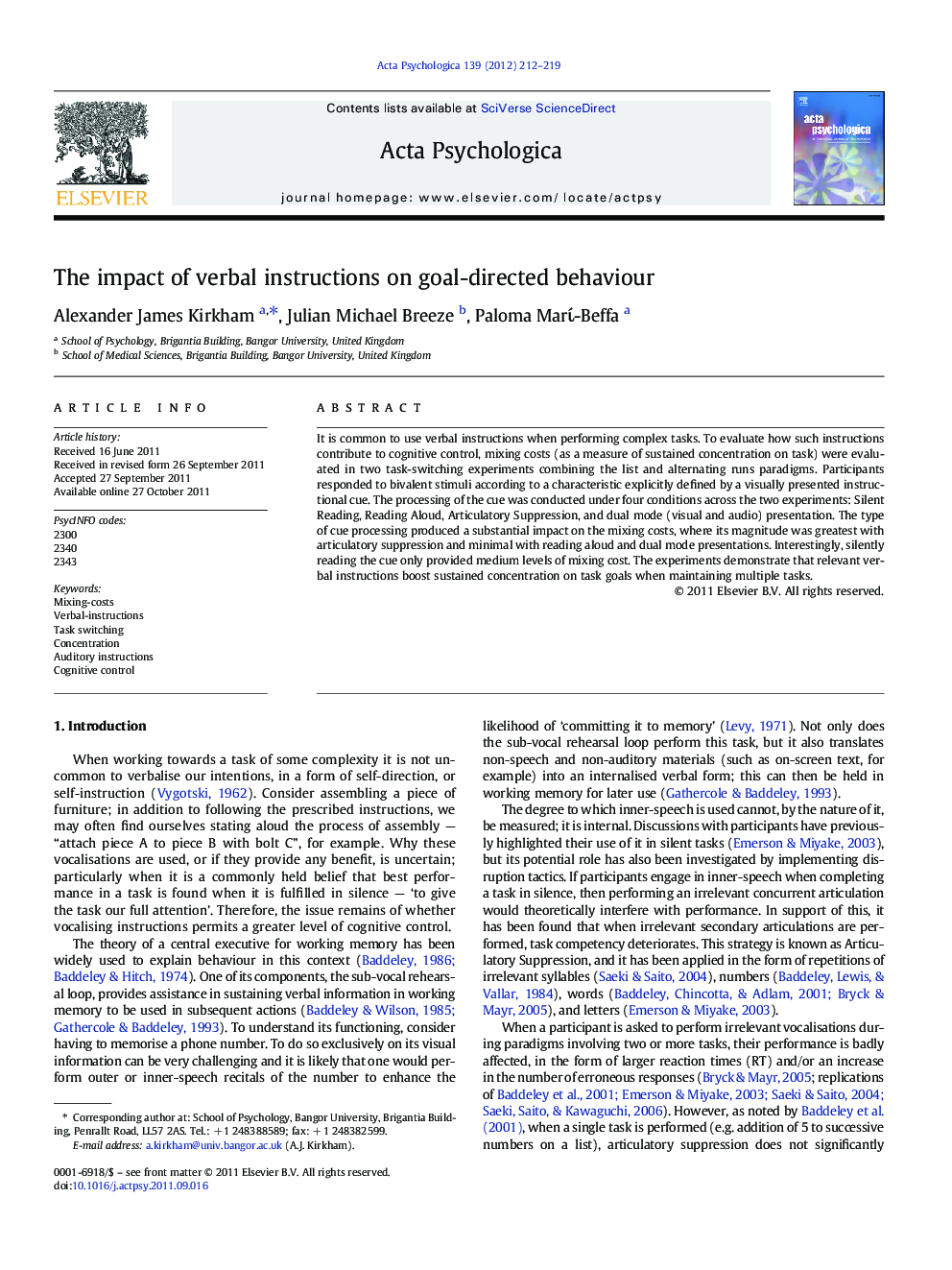| Article ID | Journal | Published Year | Pages | File Type |
|---|---|---|---|---|
| 920109 | Acta Psychologica | 2012 | 8 Pages |
It is common to use verbal instructions when performing complex tasks. To evaluate how such instructions contribute to cognitive control, mixing costs (as a measure of sustained concentration on task) were evaluated in two task-switching experiments combining the list and alternating runs paradigms. Participants responded to bivalent stimuli according to a characteristic explicitly defined by a visually presented instructional cue. The processing of the cue was conducted under four conditions across the two experiments: Silent Reading, Reading Aloud, Articulatory Suppression, and dual mode (visual and audio) presentation. The type of cue processing produced a substantial impact on the mixing costs, where its magnitude was greatest with articulatory suppression and minimal with reading aloud and dual mode presentations. Interestingly, silently reading the cue only provided medium levels of mixing cost. The experiments demonstrate that relevant verbal instructions boost sustained concentration on task goals when maintaining multiple tasks.
► Two task-switching studies, evaluating verbal instructions on cognitive control. ► Four verbal formats used; analysing both positive and negative impact. ► Combination of list and alternating runs design, allowing analysis of mixing costs. ► Relevant verbal instructions improve block performance when maintaining tasks. ► Verbal instructions improve performance over that of performing tasks in silence.
